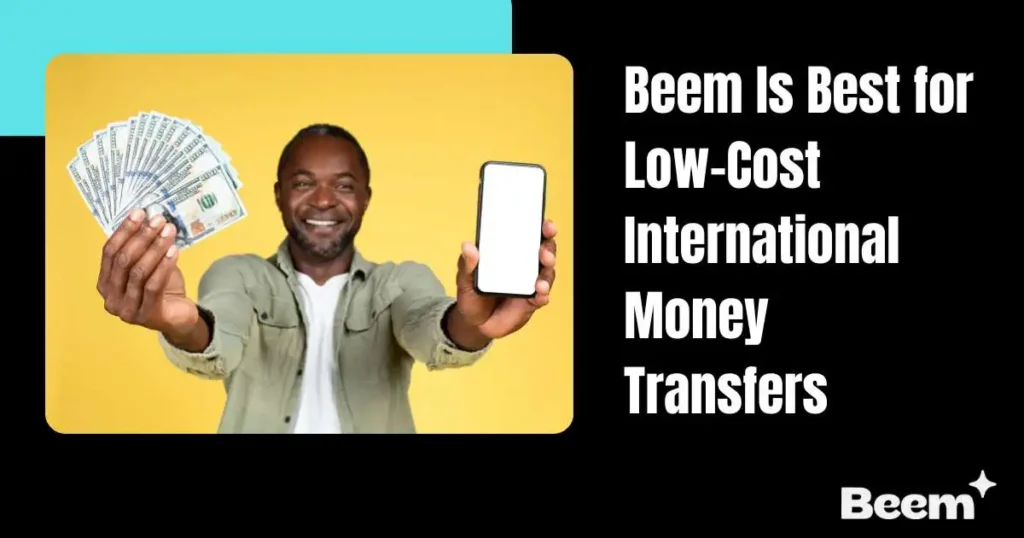At A Glance
Sending money internationally used to mean long lines at the bank, high fees, and days of waiting for your transfer to clear. For millions of US residents, especially those with family or friends overseas, the process has always been more complicated and expensive than it should be. But things are changing. Gift cards are shaping the future of sending money internationally.
Digital gift cards are emerging as a flexible, fast, and surprisingly personal way to send value across borders. They’re opening up new possibilities for families, freelancers, students, and businesses alike.
The Old Way: Traditional International Money Transfers
For decades, sending money internationally from the US meant relying on banks, wire transfers, or big names like Western Union and MoneyGram. These services have been a lifeline for many, but they come with plenty of headaches:
- High transfer fees: Outgoing international wires from US banks can cost $35–$50 per transaction, not counting hidden exchange rate markups that eat into your transfer.
- Slow processing times: Bank wires can take 1–5 business days. Even digital apps like PayPal or Xoom are limited by banking hours and compliance checks.
- Accessibility barriers: Recipients often need a bank account or government-issued ID or must travel to an agent’s location for cash pickup. In many developing countries, these requirements are a big hurdle.
- Paperwork and compliance: Both sender and recipient may need to provide detailed information, fill out forms, and jump through KYC (Know Your Customer) hoops.
- Hidden costs: Exchange rate markups, intermediary bank fees, and compliance charges can mean your recipient gets less than you expected.
No wonder people are searching for something easier, faster, and more flexible.
Also Read: Is Sending Money Through Gift Cards the New Normal?
The Rise of Digital Gift Cards in Cross-Border Payments
So, what exactly are international gift cards, and why are they suddenly so popular for sending money abroad?
What Are International Gift Cards?
International gift cards are prepaid cards (like Visa, Mastercard, or American Express) or retailer-specific cards (like Amazon or Walmart) that can be bought online and sent instantly to anyone with an email address or phone number. Some cards are open-loop, meaning they can be used almost anywhere, while others are tied to specific stores or services.
- Prepaid Visa/Mastercard: Usable at millions of locations worldwide, both online and in-store.
- Retailer cards: Amazon, Walmart, Google Play, and more, which can be redeemed for various goods and services.
- Digital service cards: Netflix, Spotify, Apple, and others, perfect for entertainment, subscriptions, or digital content.
How US Senders Can Deliver Gift Cards Globally
You can purchase and send international gift cards from the comfort of your home using digital platforms, official retailer websites, or specialized aggregators. Delivery is instant, usually via email, SMS, QR code, or even social media DMs. There are no shipping fees, no waiting for the mail, and no lost cards.
Real-World Examples
- Families: Parents in the US send Amazon or Visa gift cards to kids studying abroad, letting them buy books, groceries, or supplies instantly.
- Freelancers and gig workers: Many international freelancers now accept gift cards as payment when PayPal or bank transfers aren’t available or are too expensive.
- Emergency support: During crises, gift cards can be sent in seconds to help loved ones buy essentials or pay bills without delay.
Why Gift Cards Are a Game Changer for Remittances
Speed
Traditional transfers can take days. Gift cards are delivered instantly, 24/7, even on weekends and holidays. This is a huge advantage in emergencies or for last-minute gifts.
No Bank Account Required
Not everyone has access to a bank account, especially in developing countries. Gift cards can be redeemed online or in-store, making them accessible to the unbanked and underbanked.
Personalization
Gift cards aren’t just about sending money – they’re about sending a message. You can add a personal note, choose a design, or tailor the card for a birthday, holiday, or special occasion. This makes the transfer feel more thoughtful and less transactional.
Flexibility
Recipients can use open-loop cards (like Visa or Mastercard) almost anywhere or use retailer cards for specific needs. In some countries, gift cards can be sold for cash or traded for local currency or crypto, giving recipients more options.
Security
Gift cards aren’t linked to your bank account or sensitive financial information. Many come with PINs or activation codes for extra protection. If a card is lost, it can often be canceled and reissued.
Bypassing Currency and Regional Limitations
Many global cards work across borders and can be used in multiple currencies, making them an excellent option for international gifting or support.
Also Read: How To Send Money Without Leaving Your Home Via Gift Cards
The Pros and Cons of Sending Money via Gift Cards
Advantages
- Instant, remote, and global delivery: No need to visit a bank or agent, and no waiting for funds to clear.
- No bank accounts or physical presence needed: Great for recipients in remote areas or those without access to traditional banking.
- Lower or no transfer fees: Many platforms charge only a small purchase fee, with no recipient fees.
- Accessibility: Perfect for students, freelancers, or younger recipients who may not have a bank account.
Drawbacks
- Regional restrictions: Not all cards work everywhere. Always check the card’s terms and supported countries before buying.
- Possible fees: Some cards have activation, conversion, or expiration fees. Unused balances may expire if not redeemed in time.
- Not ideal for large or recurring payments: Gift cards are best for small to medium transfers, not for paying tuition or salaries.
- Fraud risk: Scams and counterfeit cards are a concern if you don’t buy from reputable sources. Stick to official retailers and trusted platforms.
- Cash conversion challenges: In some regions, turning a gift card into cash can be tricky and involve a fee or discount.
How Gift Cards Are Already Changing the Remittance Experience
Case Studies
- US to Nigeria: Many Nigerians in the US send Amazon or Visa gift cards home, where recipients can sell them for local currency or use them for online shopping. This model bypasses slow, expensive remittance channels and works 24/7.
- US to India: Students and families use gift cards for tuition, books, or living expenses. Amazon India and other local platforms accept international cards, making it easy to support loved ones.
- Freelancers and Gig Workers: When PayPal or bank transfers aren’t available, international gig workers often accept gift cards as payment. It’s fast, borderless, and requires only an email address.
Businesses and Nonprofits
- Rewards and Payroll: Companies with global teams use gift cards for bonuses, rewards, or partial payroll, avoiding the complexity of cross-border payroll systems.
- Aid and Disaster Relief: Nonprofits distribute gift cards to people in crisis zones, enabling them to buy essentials immediately without waiting for bank transfers or cash disbursements.
Also Read: How Gift Cards Will Change The World Of Global Money Transfers
Choosing and Sending the Right International Gift Card
How to Pick the Right Card
- Open-loop cards (Visa, Mastercard): Best for maximum flexibility and acceptance.
- Retailer-specific cards (Amazon, Walmart, Google Play): Great if you know where your recipient shops or what they need.
- Digital service cards: Perfect for entertainment, subscriptions, or app purchases.
Using Aggregators and Platforms
Platforms specializing in international gift cards make sending value to multiple countries at once easy. They handle currency conversion, local restrictions, and bulk sending for businesses or families with recipients in different places.
Tips for Ensuring Your Gift Card Works
- Check supported countries and currencies: Not all cards are truly global.
- Read the terms and expiration policy: Some cards expire or lose value if not used promptly.
- Educate your recipient: Make sure they know how to redeem the card and what to do if they have issues.
Best Practices for Safe and Secure Transfers
- Buy from official sources: Avoid third-party sellers or auction sites.
- Keep receipts and confirmation emails: You’ll need these if there’s a problem.
- Use secure payment methods: Credit cards or PayPal offer extra protection.
- Communicate with your recipient: Let them know that a card is coming their way, and they should brush up on how to use it.
What’s Next? The Future of Gift Cards and the Global Money Movement

The Convergence of Gift Cards, Digital Wallets, and Mobile Payments
Gift cards are merging with digital wallets and mobile payment apps, making sending, receiving, and spending value across borders easier than ever. Soon, you may be able to send a gift card that’s instantly loaded into your recipient’s Apple Pay, Google Pay, or even a crypto wallet.
Integration with Loyalty Programs, Crypto, and Super-Apps
Some platforms now let users trade gift cards for loyalty points, crypto, or other digital assets, expanding how value can move internationally. Super-apps are emerging that combine payments, shopping, and rewards in one place.
Regulatory and Security Challenges
As gift cards become more popular for remittances, regulators are paying closer attention. Expect more focus on KYC/AML compliance, consumer protection, and fraud prevention. Providers will need to balance ease of use with robust security.
Predictions for the Future
- Financial inclusion: Gift cards can help close the gap for the unbanked, offering a simple way to receive support or payments.
- Faster, cheaper remittances: As technology improves, expect even lower fees and instant transfers to become the norm.
- Changing gifting culture: Sending a gift card will become as common as wiring money, with more personalization and flexibility.
Conclusion
Gift cards are shaping the future of sending money internationally. For US residents, they’re becoming a powerful tool for sending money across borders – instantly, securely, and with a personal touch. Digital gift cards offer a modern alternative to slow, expensive traditional transfers.
As more people, businesses, and nonprofits embrace this trend, the future of the global money movement looks faster, more inclusive, and more convenient. Next time you need to send money across seas, consider skipping the bank and sending a gift card instead. The world of remittances is changing, and gift cards are leading the way.
Any financial guidance goes a long way. Don’t forget to try Beem for more tips on improving your financial health, building credit, and discovering better alternatives. Download the Beem app here.






